Draper vs Ruud: Madrid Final Recap
a tale of two forehands — moonball returns — predictable backhands
Casper Ruud came back from a slow start to defeat Jack Draper 7/5 3/6 6/4 in the final of the Madrid Masters on Sunday. It was the pair’s first meeting, and Ruud’s first big title, having gone 0/6 in previous M1000 and slam finals.1
I’d wager that Draper’s forehand is one of the most improved shots of the last 18 months, evolving from a spin-oriented crosscourt holding pattern, into a dynamic and powerful all-court weapon.

“Jack enjoys hitting his forehand into that quadrant of the court — a righty’s forehand — and he catches a lot of the righty’s off-guard, because so many lefties hook their forehands crosscourt into a righty’s backhand. Jack’s got that shot [also], but he mixes it up so well.”
— Robbie Koenig for Tennis TV
His down-the-line forehand into the righty’s forehand has been a feature of several other finals he has played recently — notably in Indian Wells, as well as in Vienna last fall. It’s effective because the opponent positions themselves left-of-centre to cut off the possibility of the heavy and wide crosscourt lefty forehand, opening up a lot of real estate for the down-the-line winner (look at Ruud’s split-step location in the above gif).

Draper hit a similar forehand to seal his own service game, and then was gifted a break for 2-1 off the back of two double faults in a row from Ruud when serving at deuce.
Draper also showcased his backhand excellence early on. It’s flat and hard and he loves to drive it crosscourt into the righty’s forehand as well, rushing the more leaky wing in tennis with great regularity. In that sense, he’s a little unusual for a left-hander, in that he doesn’t look to expose the right-hander’s backhand as frequently as someone like a Nadal, and I think that ended up hurting him as this match unfolded.2
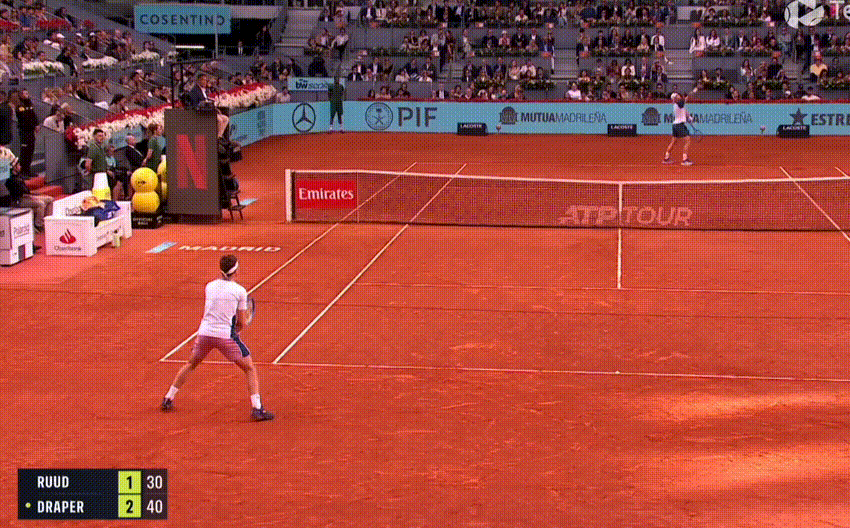
Down the other end of the court, Ruud was getting his bearings against the big lefty-server, using this blocked return closer to the baseline to get in the point. It’s been a feature of his game for some time. I’m a big fan of this play: you improve your returns-in-play percentage, force your opponent to generate their own spin and power, force them to approach from low contact points, and create a defensive situation with your anaerobic fuel tanks fully stocked:
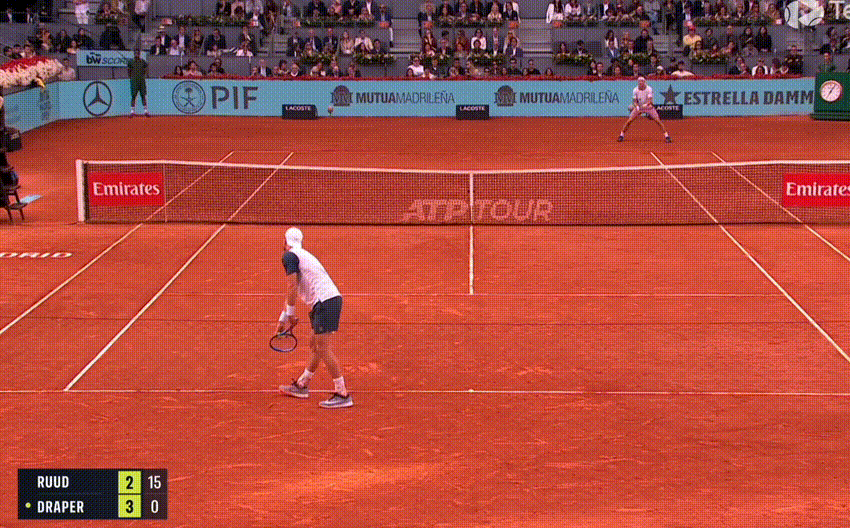
Draper had been the better player through the first nine games. However, when serving for the set at 5-4 the Brit got tight, gifting a double fault at 30-15, and tentatively brushing up steeply on a mistimed forehand at 30-30. Ruud took his first chance at 40-30, bludgeoning a couple of forehands for a forced error. All the forehand aggression from Draper seemed to disappear in the backend of this set, and Ruud welcomed the extra breathing room to find his biggest shots. Tennis Insights confirmed it:

Serving at 5-6 to stay in the set, Ruud looped a couple of awkward returns from 30-30 and 30-40 to steal the set. Draper let both bounce, and on the sit down he was furious.
Most of Ruud’s woes in the first set were all second-serve related (he’d double-faulted twice to go down a break, and was 2/12 on second-serve points), because when he landed the first serve, he was absolutely dominating, winning 20/22 compared to Draper’s 14/21.
In the second set both held through to 3-3 until Draper got a sniff at 0/30 on return and tried to give Ruud a taste of his own moon-balling-return medicine. The Norwegian was having none of it, avoiding the mistake of letting it bounce, and ripping it from shoulder height with his well-equipped western forehand:
Draper would go on to earn two break points at 15-40. A stat flashed that Draper had hit ten forehand winners in the first eight games, but only one winner in the last ten games. The Brit was seemingly privy to the telecast, because the very next point he made a point to add to his tally:

Both these players possess big, heavy, extreme-gripped forehands. It’s no surprise to see that kind of shot from both ends in the final of an event like Madrid, with the altitude and bounce teeing the ball up in their higher strike zones. But one difference that emerged in this final was Ruud’s willingness to create more forehand opportunities; the Norwegian found way more forehands than Draper.
But don’t take my word (gif) for it — the numbers back it up.
I’m fortunate enough to have access to some TennisViz analysis, which itself gets data from Tennis Data Innovations (TDI), and their numbers help bolster the stories that unfold here. Ruud ended up using his forehand 70% of time in this final, compared to Draper’s 45%:

On top of that, we can see that Ruud also hit his forehand with more speed, more spin, more height and depth, and landed more in the court (88% to Draper’s 79%). It was a decisive difference.
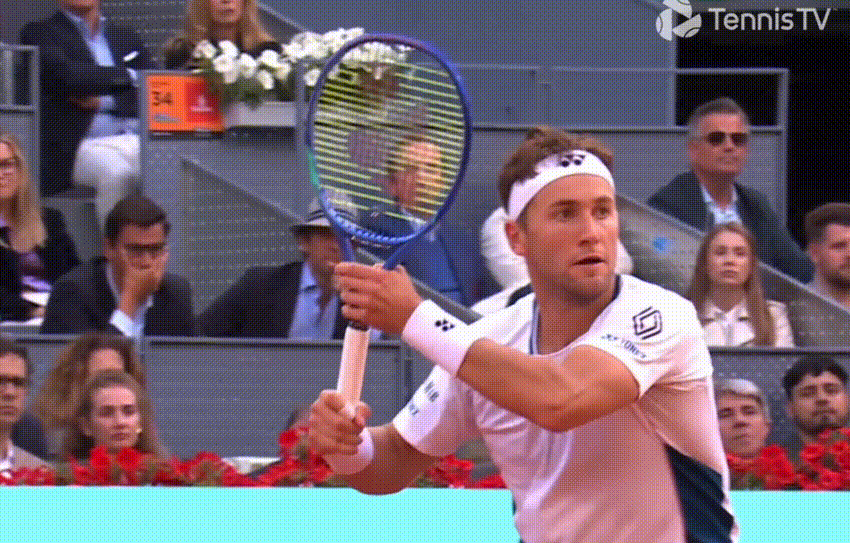
I think Draper is accustomed to using his crosscourt backhand to rush righty forehands, and his backhand is no doubt better than Ruud’s. On hard and grass courts it is very effective at staying low and skidding through, but here on the clay that tactic was blunted just enough. Ruud could stand deeper and weather those balls, and then had the time to find more forehands from the ad-court, which is where he does his most damage:
Ruud’s forehand is tailored for clay tennis, and he was more proactive with his footwork to make use of that. Look at the height and spin he uses until he gets that ball high and inside the baseline, which he flattens out for the winner.
Draper survived an 11-minute mammoth third game in set 3. It was great viewing: plenty of court-level coverage, huge spin and power from both, athleticism, numerous break points saved, but you got the sense that Ruud’s forehand was getting too many opportunities, too many looks from the ad-side.


Ruud finally did break in the fifth game of the third set, and the physicality was perhaps taking its toll on the bigger and heavier Draper, who lost a first serve at 2-4 for a second time violation, following a brutal exchange that had the Brit scampering all over the court. He would hold there, but Ruud was still dictating many of the important points down the homestretch, and Draper’s end-range danger was starting to wain:
Serving for the match at 5-4, Ruud found three first serves, and only had to hit one backhand in those three points to bring up match point:
On match point it was more of the same: Draper’s habit of hitting the backhand hard and cross didn’t bother the deeply positioned Ruud, if anything, it just kept giving him rhythm to see so many consecutive forehands. Such an accomplished clay-courter didn’t need a second chance:
It was a sweet victory for a player who had only a few days prior opened up on the mental health struggles he had been experiencing on tour in recent times. Nothing is more important than your health, but a first Masters 1000 is a sweet cherry on top for Ruud.
“It’s been a ling time coming. Something I dreamed about since I was young, so it was an incredible feeling to accomplish it.”
— Ruud post-match
A look at his clay resume since Covid:
For Draper it was a positive fortnight given his lack of clay experience. I thought he got too predictable with his backhand this match, and gave Ruud too many forehands as a result, but it’s hard to change your bread-and-butter plays on a dime in big moments. I also think he could have come forward more behind his serve, given how successful he was when doing so (14/18), and for how frequently Ruud decided to stand deep and use higher, loopier return shots. Despite all that, the Brit was close to winning this.
TennisViz noted that Ruud’s performance rating in the final was the highest on clay from any player so far this year, and Draper’s rating was the highest score from a losing player on clay this year, which reflects the quality of this match overall (Draper and Ruud both finished with 99 points won each).
I’ll be back with another podcast attempt for Rome. See you in the comments. HC.
Pretty tough competition though. His opponents read: Alcaraz, Nadal, Alcaraz, Djokovic, Djokovic, Tsitsipas.
Although he certainly did that at times in Indian Wells
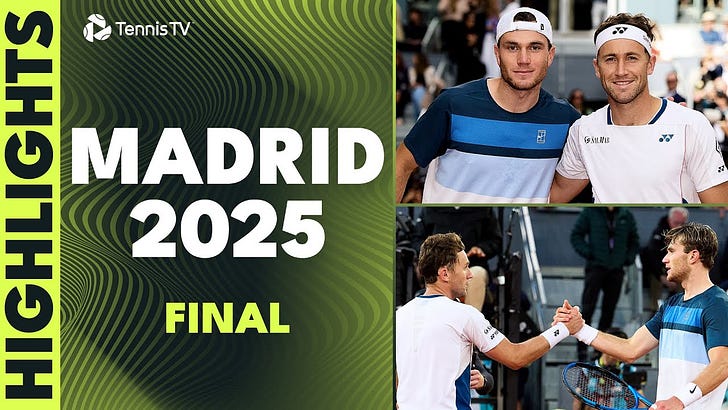




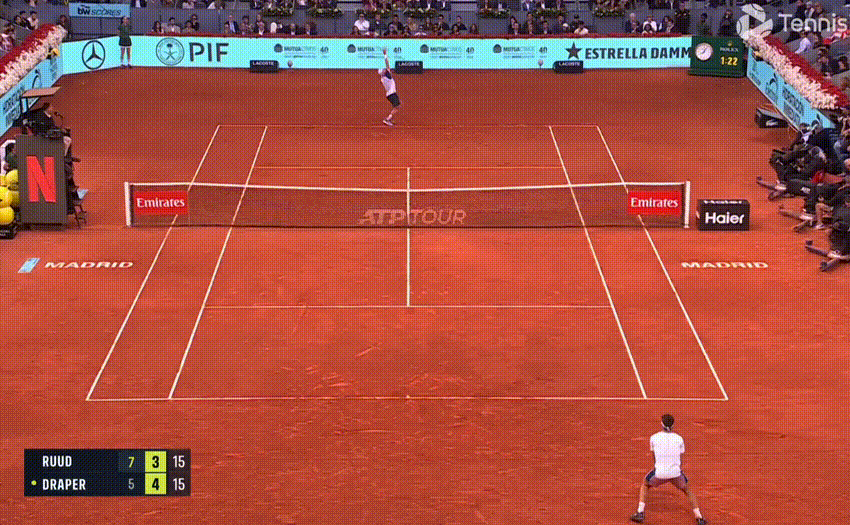
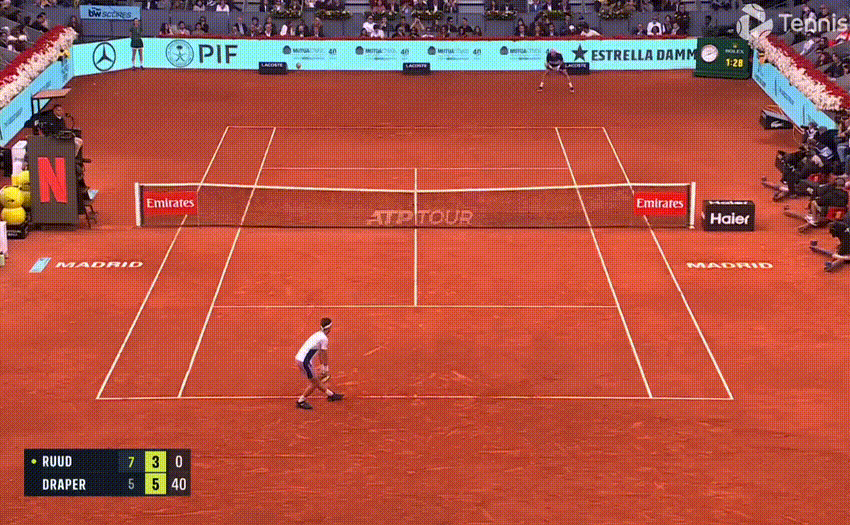

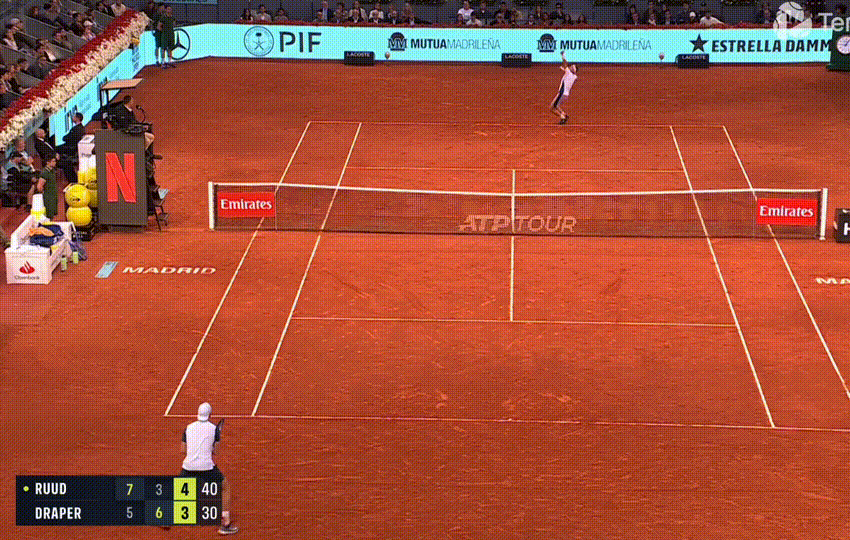
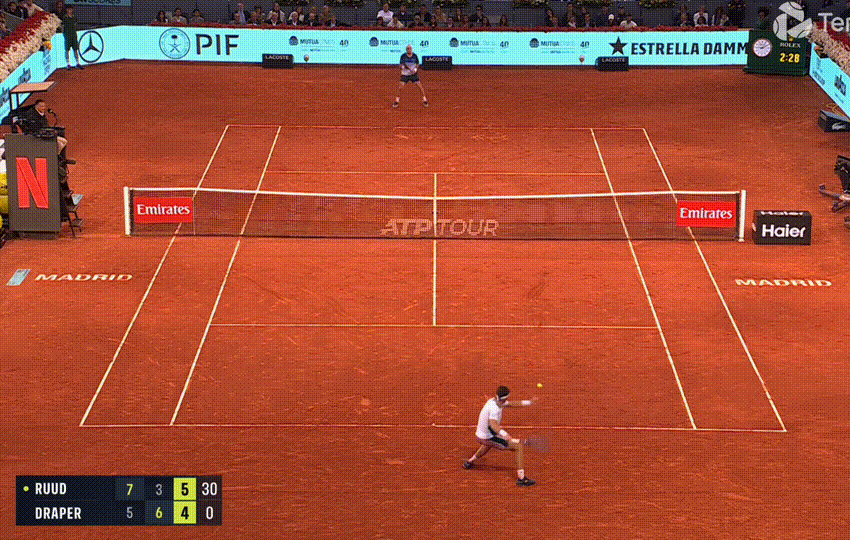
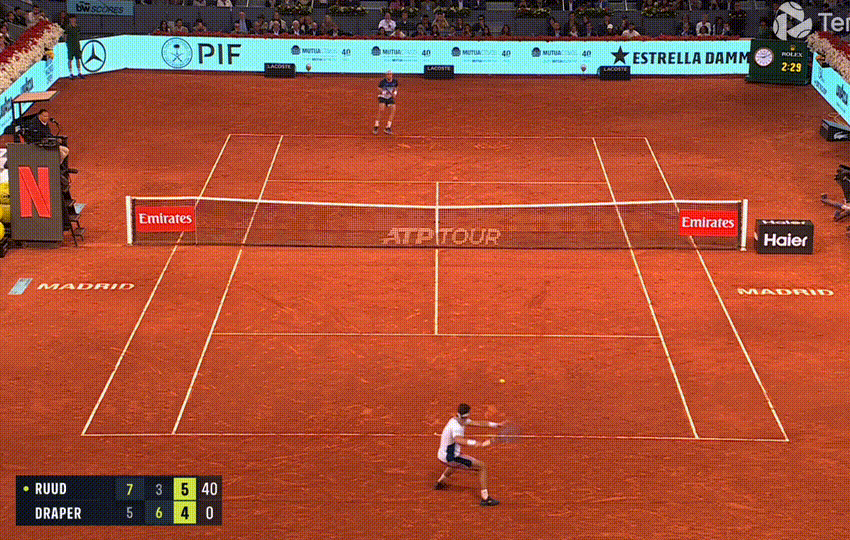


Aaaaaand only now did I realise I wrote Rune in the title. Terrible unforced error.
I really like Draper but I have seen him get tired and run out of gas. 30 years ago he would have been like Krajicek. Today it’s tough because the conditions are slower. He is playing with two hands which wears him down more. I totally agree he should attack the net more. It would help him win. But in best of five, not sure he can last.